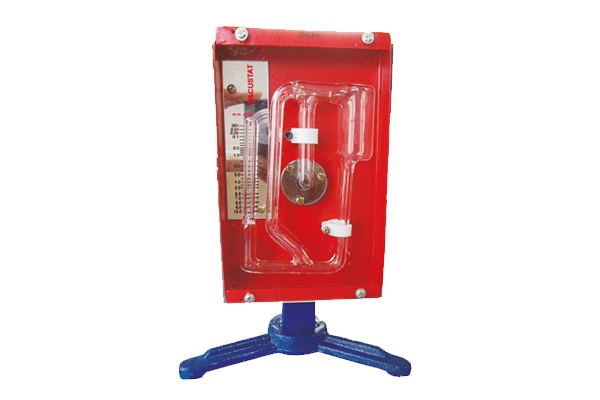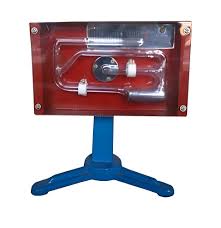McLeod Gauge



Mcleod Gauge
The McLeod gauge, serves as a scientific instrument specifically designed for measuring very low pressures, reaching down to 10^−6 Torr (0.133 mPa). While it was once widely used, particularly in vacuum applications like lyophilizers, the prevalence of electronic vacuum gauges has largely replaced McLeod gauges in contemporary settings.
Design and Operation:
- Similarity to Mercury-Column Manometer: The design of a McLeod gauge bears some resemblance to a mercury-column manometer and is typically filled with mercury.
- Compression Process: The gauge operates by taking a sample volume of gas from a vacuum chamber, compressing it by tilting and infilling with mercury.
- Measurement: The pressure in this compressed volume is then measured using a mercury manometer. By knowing the compression ratio (initial to final volumes), Boyle’s law can be applied to determine the pressure of the original vacuum.
Accuracy and Limitations:
- Accuracy for Non-Condensable Gases: The method is relatively accurate for non-condensable gases like oxygen and nitrogen.
- Issue with Condensable Gases: Condensable gases (water vapor, ammonia, carbon dioxide, pump-oil vapors) may be in gaseous form in the low-pressure vacuum but will condense during compression, leading to erroneous readings.
- Mitigation with Cold Trap: To handle condensable vapors, a cold trap can be used in conjunction with a McLeod gauge to condense these vapors before they enter the gauge.
Advantages and Applications:
- Calibration Consistency: McLeod gauges have the advantage of nearly consistent calibration for all non-condensable gases.
- Manual or Automated Operation: The device can be manually operated with a visual scale reading or automated using methods such as a small electric motor periodically rotating the assembly to collect a gas sample.
- Resistance Measurement: In some configurations, a fine platinum wire in the capillary tube can indicate the height of the mercury column by its resistance.
Comparison with Electronic Vacuum Gauges:
- Modern Alternatives: Electronic vacuum gauges are simpler, less fragile, and eliminate the mercury hazard associated with McLeod gauges.
- Dependency on Gas Nature: Electronic gauges, however, may exhibit a reading dependency on the chemical nature of the gas being measured, and their calibration can be unstable.
- Calibration Standard: Despite their decline in everyday use, McLeod gauges persist as calibration standards for electronic gauges due to their stable calibration across gases.